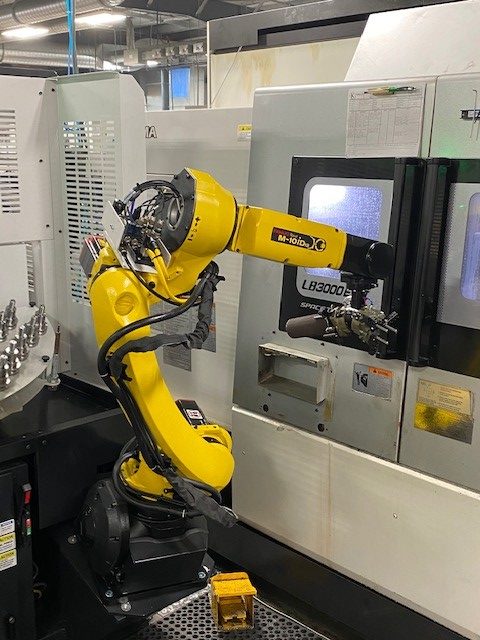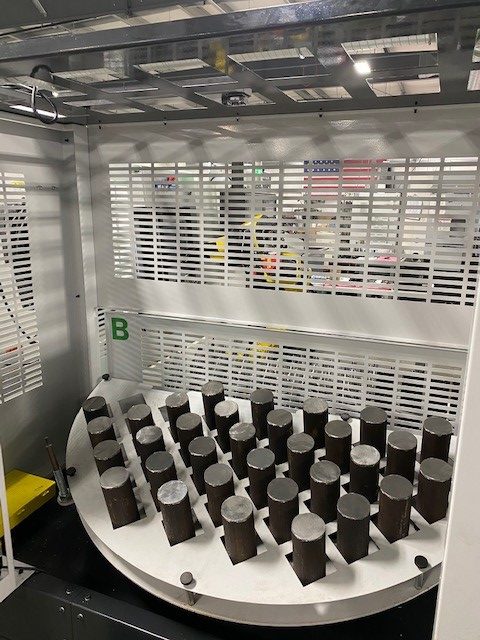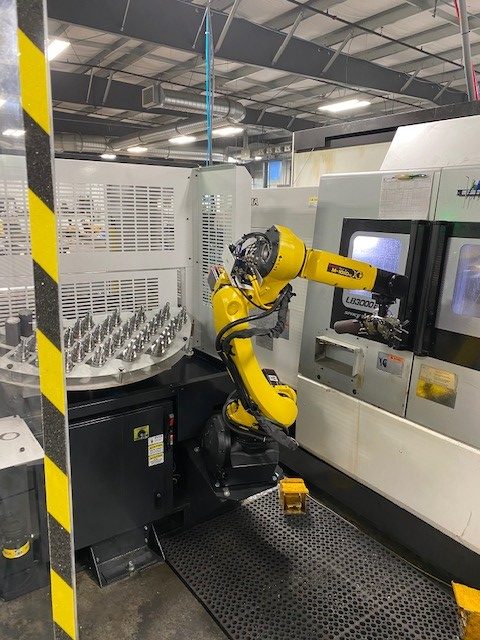At China Precision Parts, we’ve been running lights out CNC Machining on our swiss turning centers for years. What does lights out mean? Learn more at our previous blog.
Recently we purchased our first fully automated robot loader from AWR (Automation Within Reach), giving us our first shot at robot loading a large turning center. The Fanuc Robot is set-up to load 7” slugs and unload a finished part on our Okuma LB 3000 lathe. We learned a lot when we had to set up our new robot, and we’re passing our learnings onto you! Here are a few things to look out for while getting to fully lights out CNC machining.
Tooling
Tool life and tool monitoring become exponentially more important when you are relying on the robot to keep things running smoothly versus an operator. There is no one there to stop the machine when a tool breaks and you run the risk of a costly wreck. We had to take the time to understand our tool wear, tool life, and the machines capability to monitor tool breakage in case something went wrong so we did not destroy multiple tools or damage the turret. It is also important to time out and plan the tool life to change tooling when an operator is in the facility. That might mean investigating different tools, tweaking your feeds and speeds, or changing an insert a little earlier than expected to maximize the unattended run time.

Chip Control and Removal
While we were getting the tooling under control, chip control became another focal point. Stringy chips or chips that did not evacuate properly can get hung up in the automation and cause damage to the machine or robots. Getting a nice, manageable chip is paramount in unattended operations. As well as the ability to get chips off the machine. Large heavy cuts may fill a scrap bin up while you are running unattended and cause machine damage or stop the system. With no one around to empty chips, make sure your bins or scrap conveyor can handle the extra material before being changed.
Coolant
Running without operators also brings coolant management to the forefront. A machine stopping because coolant or oil levels are too low on an off shift with no one around wastes that opportunity to make parts unattended. Make sure you are re-capturing coolant; tanks are at levels that they can run without stopping over multiple shifts or the weekends.

Quality Processes
Knowing what you are running and the ability to keep parts within specifications is another critical aspect of running lights out. Your process must be stable, in control and predictable. There is nothing worse than running a weekend of unattended scrap. Take the time to understand tool wear and run charts prior to setting up automation. It will save you a ton of money and headaches in the long run.
Consult Lights Out Manufacturing With Us!
Programming a robot is only part of setting up a lights out operation. If you have product that might lend itself to lights out machining, our talented engineers would love to discuss it. Contact us today!

